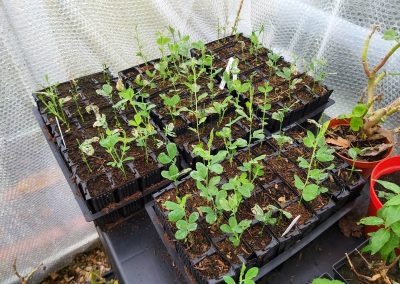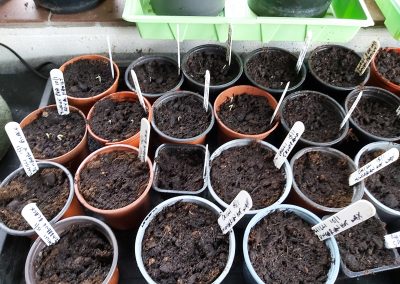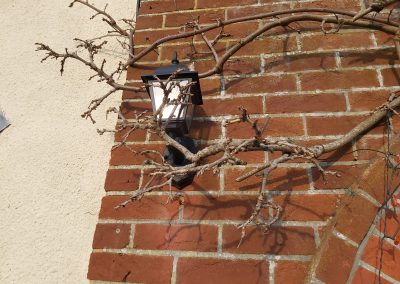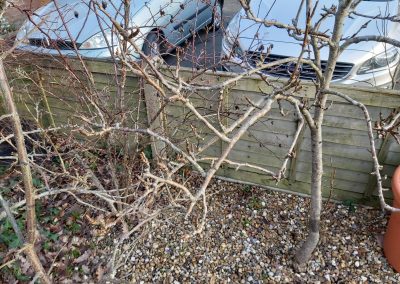Well, I mentioned last week about planting sweet peas, and the first photo is of those peas – with some bottom heat from a warming mat – just starting to sprout. Once you have 2 sets of leaves on those sweet peas, they no longer need bottom heat, and you can put them in an unheated greenhouse, a cold frame, under a sheltered porch/overhang, or a cold conservatory/shelf. No need for any heat. So these have sprouted in 6 days, and can go into a cold frame in about 3 weeks. This is important, as February is a good month for planting many flower and vegetable seeds, so we need to free up space on the tables in greenhouses and windowsills before then.
The second photo is of the sweet peas in my cold greenhouse, that I planted last October. I have already ‘pinched them out’ once (ie cut them off with secateurs, scissors or fingernails, leaving just 2 pairs of leaves), and will do so again. This will make them more bushy, with more flowers. Finally, I will plant sweet peas direct into the ground in April, a total of 3 sowings. This will mean I will have constant flowers from May until October, with a lovely scent. And you don’t need a garden to grow sweet peas – a patio, conservatory or even a windowsill are fine, so have a go. And if you haven’t got anywhere to train the sweet peas up with, there are now many types of dwarf sweet peas, that work fine just in pots. The only other seed I have planted are the chillies, as they need about 6 months to grow/produce ripe fruit. All other seeds can wait until February.
The third and fourth photo are of wisteria. As all the leaves have dropped, it is now easy to see what is happening. The third photo shows a correctly pruned cluster, with lots of knobbly bits. Each of those knobbly bits will turn into a gorgeous pendant cluster of flowers, so it looks good for flowers this spring. The fourth photo shows a spot I had previously missed, with a couple of ‘long stringy growth’ branches. That growth is the plants store of excess nitrogen, which it uses to fund more growth (it uses phosphates, potash and potassium for the flowers), and if we didn’t cut those long spindly branches off, the wisteria would have a lot of extra growth (it can grow 12ft in a season!), and a lot less flowers. So I will prune off that excess growth. And ignore anything you read in gardening magazines, with the much warmer temperatures down here in the south, you should prune wisteria a) in Sep or Oct – just chop off any excess growth (usually over 6ft in a mature plant) b) in Jan or Feb – down to a couple of shoots beyond last years growth (ie brown wood). Don’t cut off any ‘knobbles’, and don’t prune in the first couple of years until established.
The last photo is of one of my apple trees, and January is about the very last time you can prune apples and pears in the winter. As you can see, it has already been pruned, so lots of those ‘knobbly bits’ means we will get lots of blossom. Fingers crossed we don’t have a cold snap whilst the blossom is out, so that we will have a bumper apple and pear crop, like last year. The only thing left to do for the apple and pear trees, is to smear tree grease around the bark, to trap the codling moth and other pests. Don’t prune plums, peaches or apricots in the winter.
Finally I have grown many of my apple, pear, cherry and plum trees in (large) pots, which can easily go on a small sunny patio, so you don’t even need a big garden to have your own fruit tree.
Happy gardening, don’t forget to feed the wild birds (Big Garden Birdwatch is 29-31Jan), and keep safe.
Kevin





